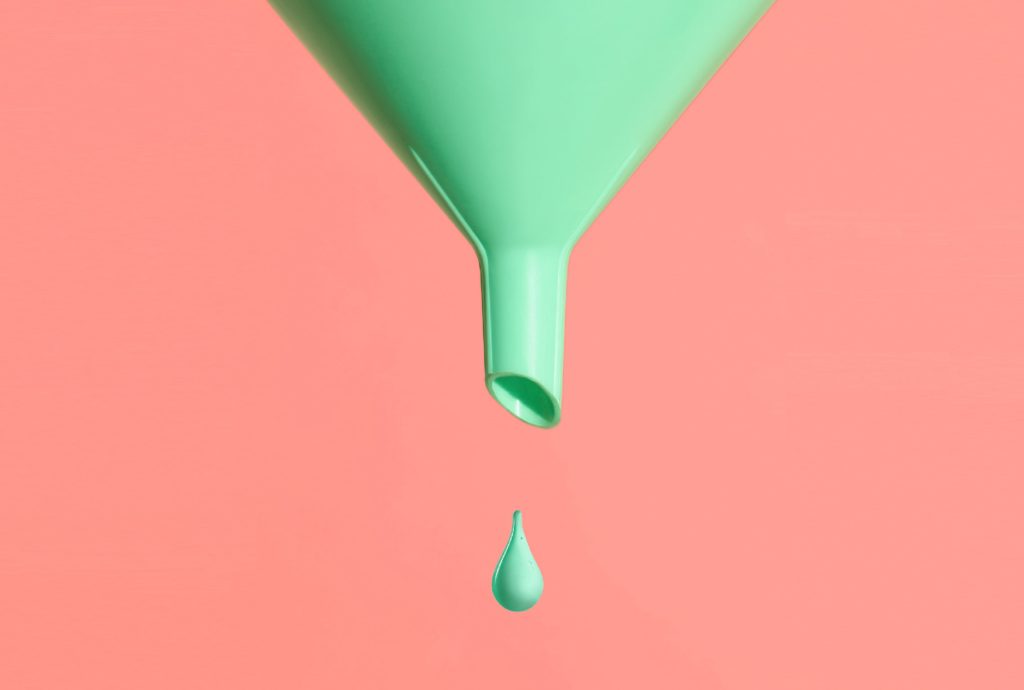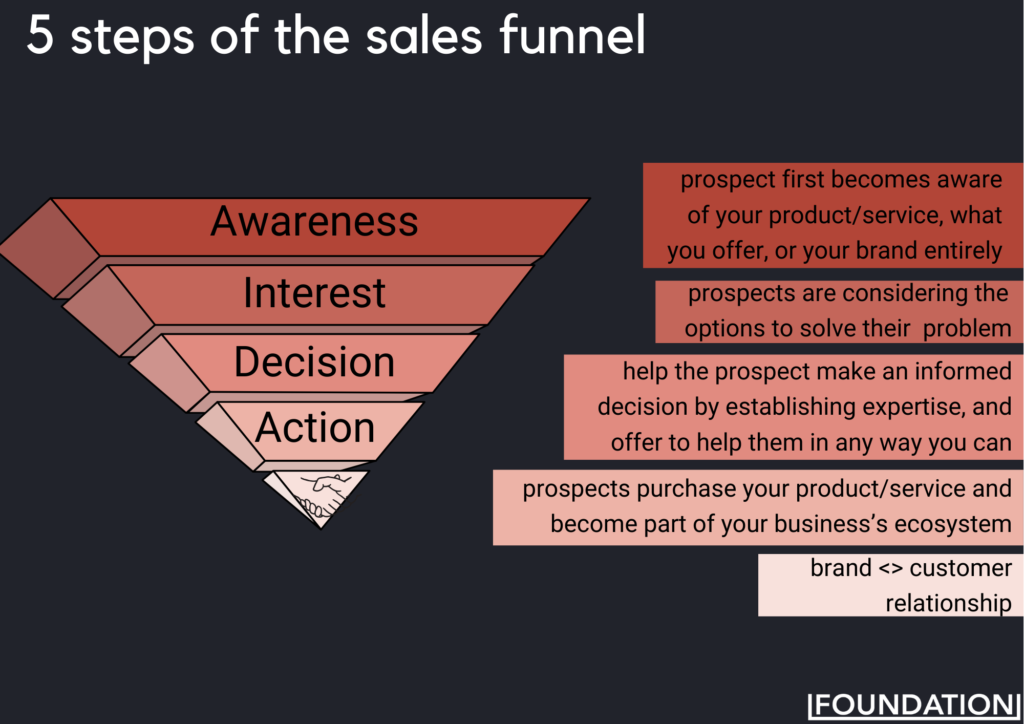Article's Content
What Is A Sales Funnel?
A sales funnel is similar to a real-life funnel, like the kind you might use for cooking. In the kitchen, a funnel is a lifesaver for moving a large amount of something into a smaller space—the liquid is poured into the big open space at the top and is then directed toward a single, much narrower, destination.
In digital marketing and sales, the funnel works similarly—at the top, lots of potential customers enter the sales funnel, and then they are focused toward a singular destination: conversion.
However, unlike the cooking funnel, not all who enter the sales funnel will follow through and end up at the other end.
Here’s the hard truth:
Most prospective buyers will not buy via your website on their first visit, especially if they have only just become aware of your brand. It takes time … and a lot has to happen to turn a browser into a buyer.
So the sales funnel is a multi-step process from when a user becomes aware of your brand to when they successfully complete a purchase (or another intended action). There are a variety of touches and relationship-building experiences that happen at every stage.


Much of this is buyer psychology. The best marketers and digital marketers know that psychology plays a big role in the sales funnel. This has to occur for prospective customers to get out those credit cards and turn into buyers (or even hyper-active buyers).
What’s Inside A Sales Funnel?
The sales funnel can be broken down into five stages: Awareness, Interest, Decision, Action and Customer Relationship. This is called the AIDA model, and you can find it in pretty much every industry.


Let’s talk about each stage in more detail:
Stage 1: Awareness
The goal of your products or services—and therefore your sales funnel—is to solve your customer’s problem. When you know the problem, build content to draw them in, then offer them a product or service to solve their problem, that’s when the real magic happens. However, getting to that stage takes work.
First, they need to know your brand and your solution exist.
That’s why the Awareness stage is really the most important. This is where the prospective customer first finds out about your brand or what you offer. They may become aware of your brand through a tweet, a Facebook post, a Google search, a Reddit conversation or something else entirely.
Depending on how they arrived at your website (organically vs. a paid ad), prospects may interact with your brand differently. When a prospect finds your brand via Google search, they have less power in the sales funnel. They are on a mission for a specific solution, and your offering fits the bill.
Step 2: Interest
When prospects reach the Interest stage in the sales funnel, they are researching, doing comparison shopping and mulling over potential solutions to their problem. If you are pushing your brand’s products or services from the very beginning, you will leave your prospects with a sour taste and chase them away.
The goal here is to establish your expertise, help the consumer make an informed decision, and offer to help in any way you can.
This is the time to swoop in with incredible content that helps potential customers rather than selling to them.
An important step in the sales funnel is email warming sequences. These emails can include personalized, value-driven stories, tutorials and product suggestions that are sent out to potential customers over days, weeks or even months.
Step 3: Decision
At the Decision stage, prospective customers might be considering two or three options to solve their problem—including your brand’s solution. In other words, they’re getting serious.
One of the most powerful ways to encourage them to take action (AKA the next stage) is to move beyond brand storytelling, copywriting, and building the habit of link-clicking. Customer reviews and testimonials prove your credibility by showing how real people have interacted with your brand and found success with your solution.
This is the time to make your best offer. It could be free shipping or first month free, a discount code, or a bonus product after purchase. Regardless of how you sweeten the deal, make it so tempting that your prospect cannot wait to say yes.
Step 4: Action
Getting to this stage is no simple feat—it takes an enormous amount of effort.
But if you do it right, then at this stage, prospects purchase your product or service and become part of your business’ ecosystem, and you’re bringin’ home the vegan bacon.
If a prospect decides against purchasing your offer, the relationship is not over. That prospect can still be targeted through emails and ad remarketing.
Step 5: Customer Relationship
When a prospect-turned-customer reaches the bottom of the funnel, it doesn’t mean your work is done. You want to do your best to turn the initial purchase into another, and another…
Your brand should now be focusing on customer retention and relationship maintenance. Follow up with the new customer to thank them for purchasing, and invite them to reach out with feedback. Also make sure the whole team is available for support if needed.
When Should I Use A Sales Funnel?
Sales funnels are not industry-specific. They are not B2C- or B2B-specific either. So the best time to start using a sales funnel is… right now. A sales funnel can take your brand from having a small digital presence to being a digital powerhouse.


Do not take shortcuts, try quick-and-easy hacks, or just start pushing your products or services in your prospects’ faces. If you want to reap the benefits, you have to put in the time.
You can get started on your sales funnel process today by creating a customer journey map.






